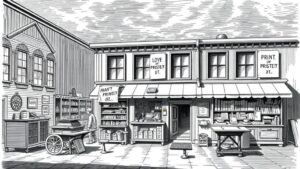Leveraging Old Oil Field Records for Mineral and Relic Finds
Leveraging Old Oil Field Records for Mineral and Relic Finds
The exploration of oil fields has left a significant legacy in terms of geological data and historical records. These assets can provide invaluable insights not only into hydrocarbons but also into potential mineral finds and archaeological relics. This academic exploration details strategies for leveraging such oil field records to enhance mineral and relic discovery, focusing on techniques, methodologies, and real-world applications.
Historical Context of Oil Field Exploration
Oil exploration dates back to the mid-19th century, with the first commercial oil well drilled in Titusville, Pennsylvania, in 1859 by Edwin Drake. As the industry evolved, extensive records were generated, documenting geological formations, drilling operations, and reservoir characteristics. These records are often stored in the form of geological surveys, drilling logs, and production reports, such as those maintained by the U.S. Geological Survey (USGS) and the American Petroleum Institute (API).
For example, records from the East Texas Oil Field, which produced over 5 billion barrels of oil from the 1930s to the 1970s, detail comprehensive geophysical studies that can also reveal metal ores and other minerals when integrated with modern analytical techniques.
Utilizing Geological Surveys for Mineral Exploration
Geological surveys conducted during oil exploration provide extensive information about subsurface formations. e data sets can be invaluable for identifying potential mineral deposits. By examining the geological context, geologists can pinpoint areas where mineralization is likely to occur based on historical data.
- Geochemical analysis derived from historical drilling mud samples can indicate the presence of significant mineral concentrations.
- Stratigraphic data help in understanding the depositional environment, which may correlate with mineral deposits.
An example can be seen in the Appalachian Basin, where oil drilling records have been re-evaluated to identify regions rich in natural gas and other minerals, thus driving a new wave of mineral exploration.
Integrating Technology with Historical Data
The integration of modern technologies such as Geographic Information Systems (GIS) and remote sensing with historical oil field records can significantly enhance the process of mineral identification. For example, GIS allows researchers to overlay historical drilling data with topographical maps, satellite imagery, and mineralogical surveys to reveal unexplored resource potential.
- Remote sensing can assist in detecting surface alterations that might indicate underlying mineral deposits.
- 3D geological modeling can provide visualizations of subsurface structures, aiding in targeted exploration efforts.
In practice, companies like BP and ExxonMobil have successfully utilized these technologies to reassess older oil fields, finding non-hydrocarbon resources alongside traditional fossil fuel extraction.
Archaeological Implications of Oil Field Records
Old oil field records have also shown promise in aiding archaeological discoveries. Historical documents may contain notes about artifacts, structures, and cultural sites encountered during drilling operations. For example, in areas of major oil production in California, records from the 1920s have been utilized to locate prehistoric sites previously overlooked.
- Geophysical mapping techniques have revealed ancient sites buried beneath oil fields, leading to important archaeological finds like tools and pottery.
- Collaboration between petroleum companies and archaeologists has become essential in regions with significant historical value.
Challenges and Considerations
While there are numerous benefits to leveraging oil field records, several challenges need to be addressed. A significant concern is the deterioration of historical data, which can complicate analysis. Also, the proprietary nature of some oil field data requires careful navigation of intellectual property rights.
Ensuring the accuracy of interpretations drawn from old records is crucial, as misrepresentations can lead to misguided exploration efforts. Collaborations among geologists, archaeologists, and historians are often necessary to create a more holistic understanding of the data.
Conclusion and Actionable Takeaways
The old oil field records are treasure troves that extend beyond hydrocarbons into the realms of minerals and archaeology. The methodology for leveraging these resources involves:
- Reevaluating historical geological surveys with modern technology.
- Integrating advanced techniques in GIS and remote sensing.
- Fostering interdisciplinary collaborations for more comprehensive studies.
As exploration progresses into a more sustainable and multifaceted approach, oil field records can serve as crucial navigational tools for future discoveries in both mineral and archaeological domains. Well-preserved records, combined with modern technologies, can lead to significant findings that enrich our understanding of both the Earth’s resources and its historical narratives.



